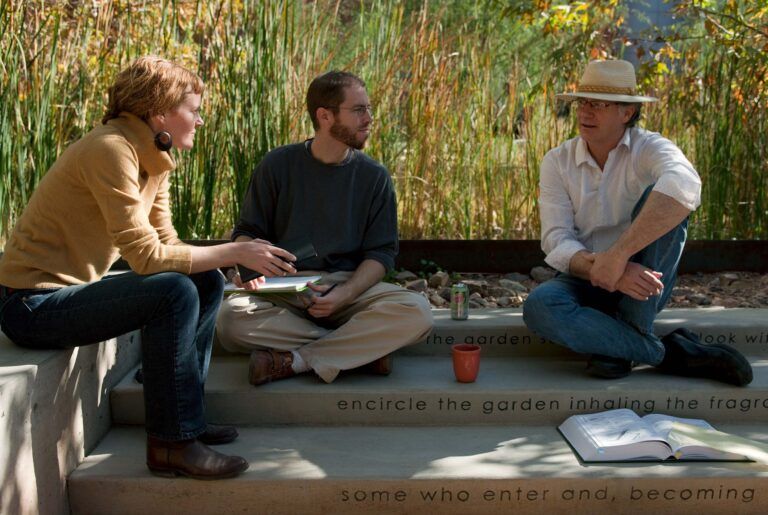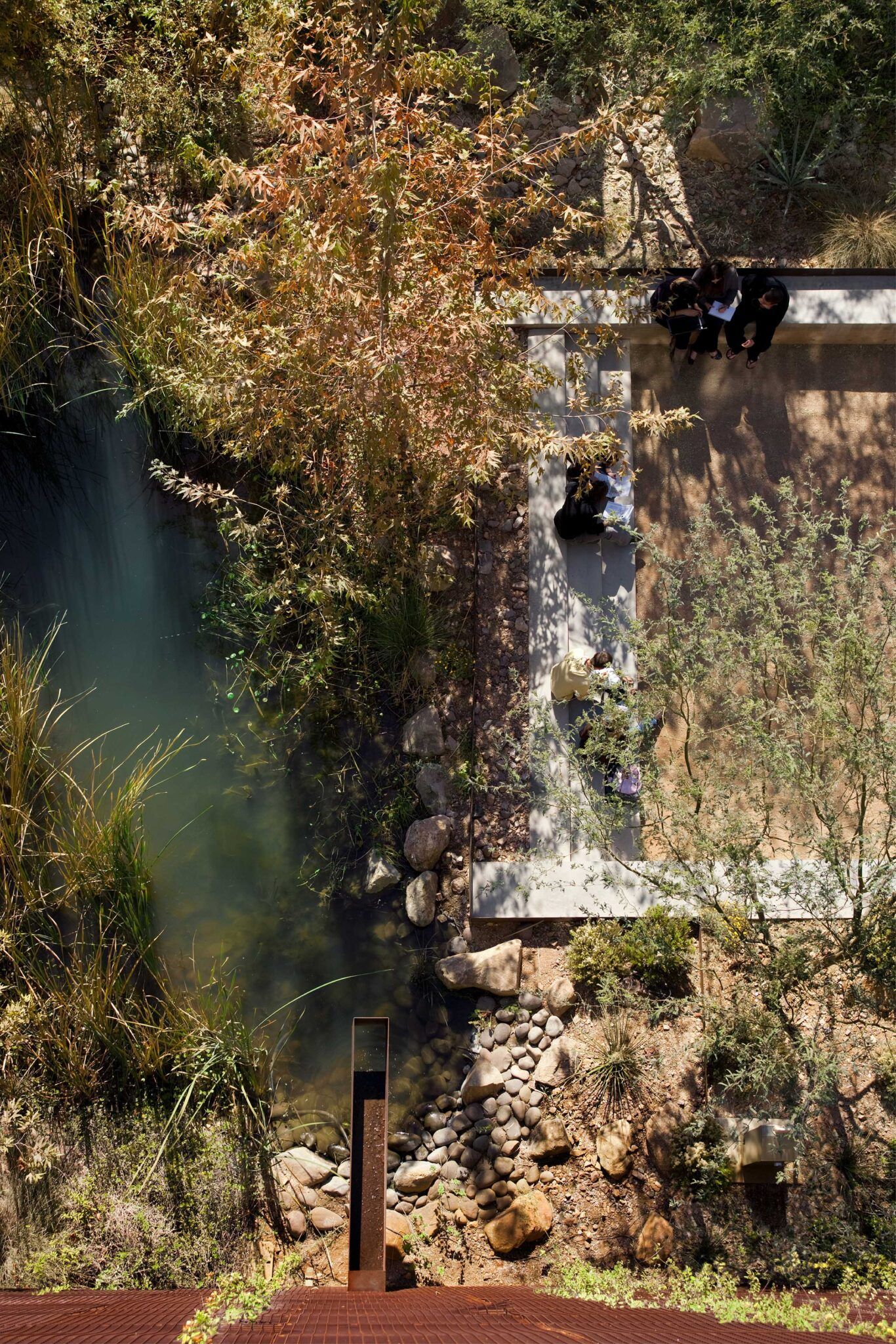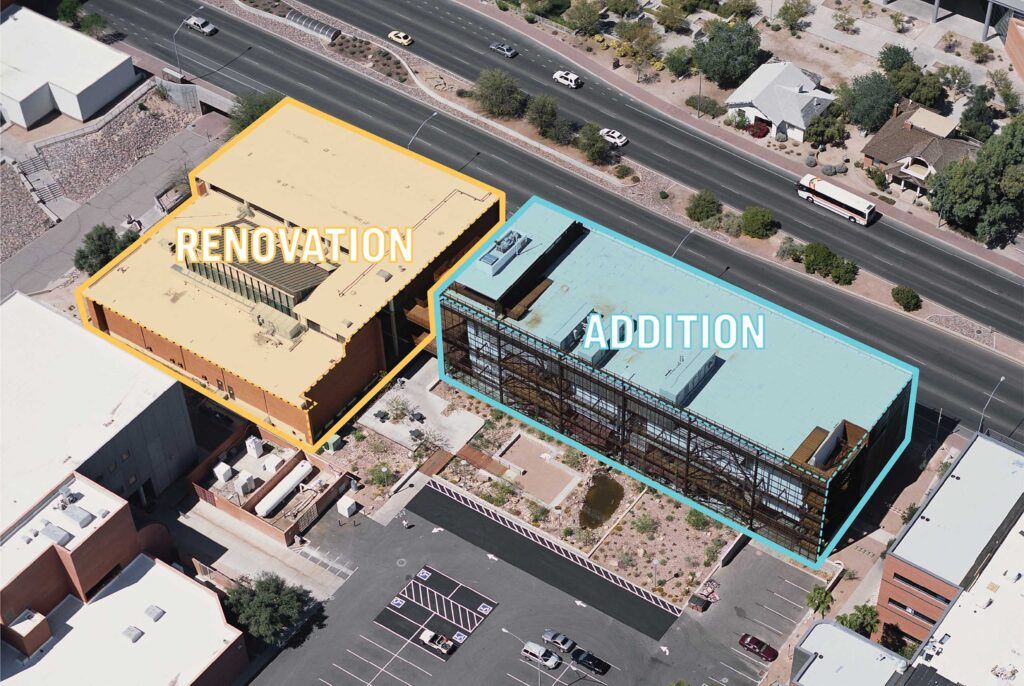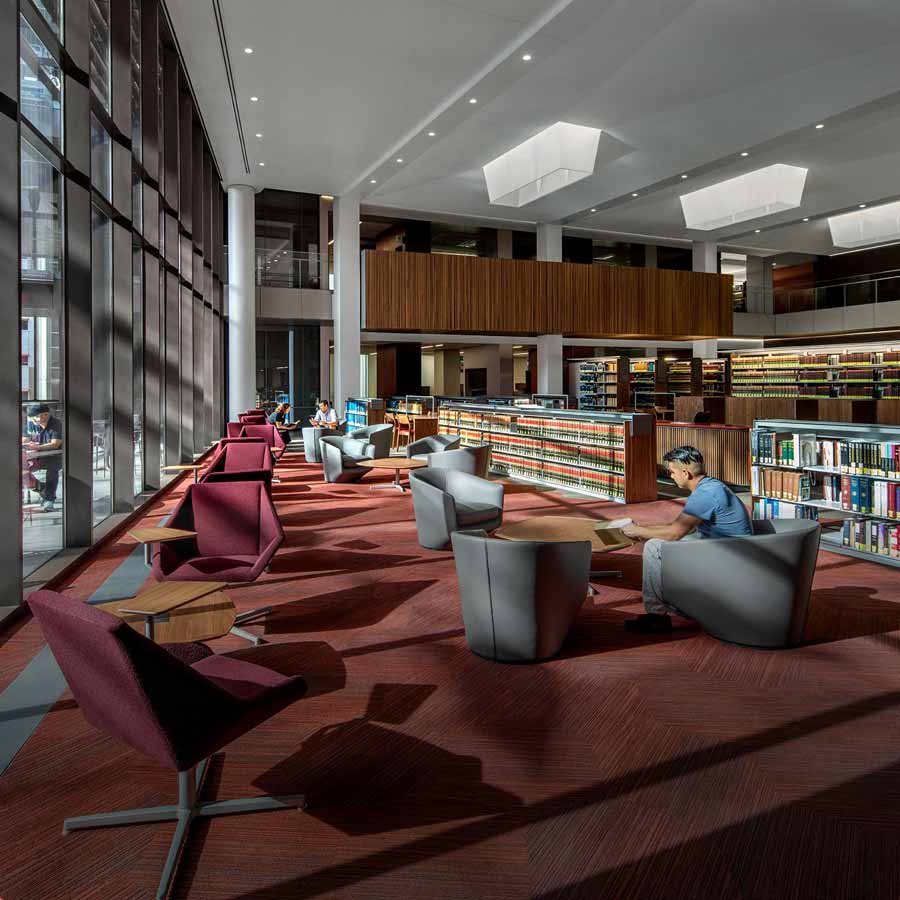
University of Arizona College of Architecture, Planning and Landscape Architecture
Client
University of Arizona
Location
Tucson, Arizona
Size
33,650 sq ft new / 37,200 sq ft remodel
Project Team
Guided by a pedagogy rooted in transparency, collaboration, and connection to place, the College of Architecture, Planning, and Landscape Architecture at the University of Arizona is envisioned as a working laboratory for sustainable practices, where students from different disciplines learn how to design for the arid landscape of the Sonoran Desert. The renovation of its existing building and a new addition allows these once separate schools to come together as a community in a space that reinforces the symbiotic nature of their work.
The addition houses design studios, meeting rooms, a new open-air materials lab at the ground level, half-sunken to utilize the insulating earth while remaining visible to students, and design studios, meeting rooms, and offices in the two levels above. The building’s steel structure and systems serving electricity, air conditioning, and ventilation are all on display for students to observe and absorb. Offices and meeting rooms are fully glazed to the studios, expressing an ethic of shared knowledge, space, views, and daylight.

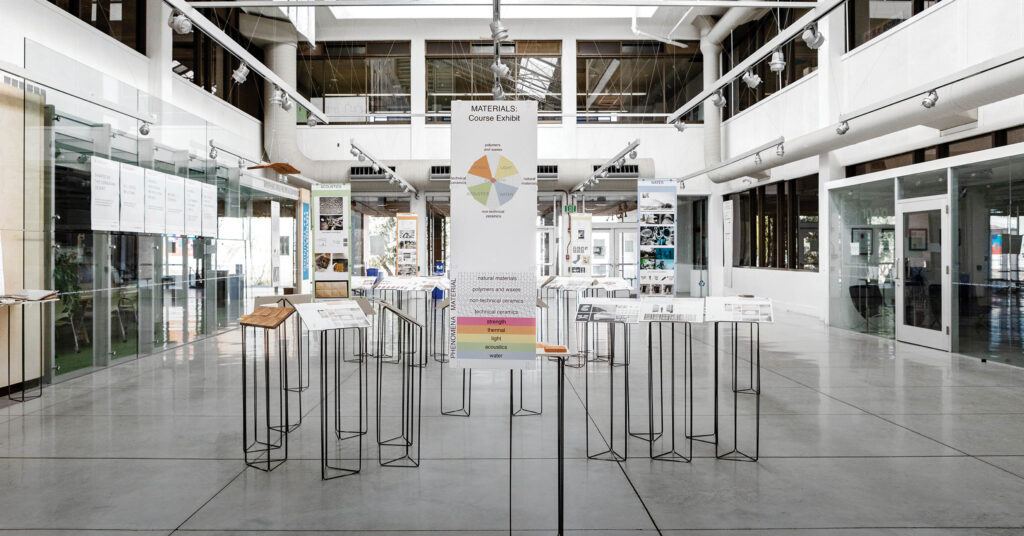
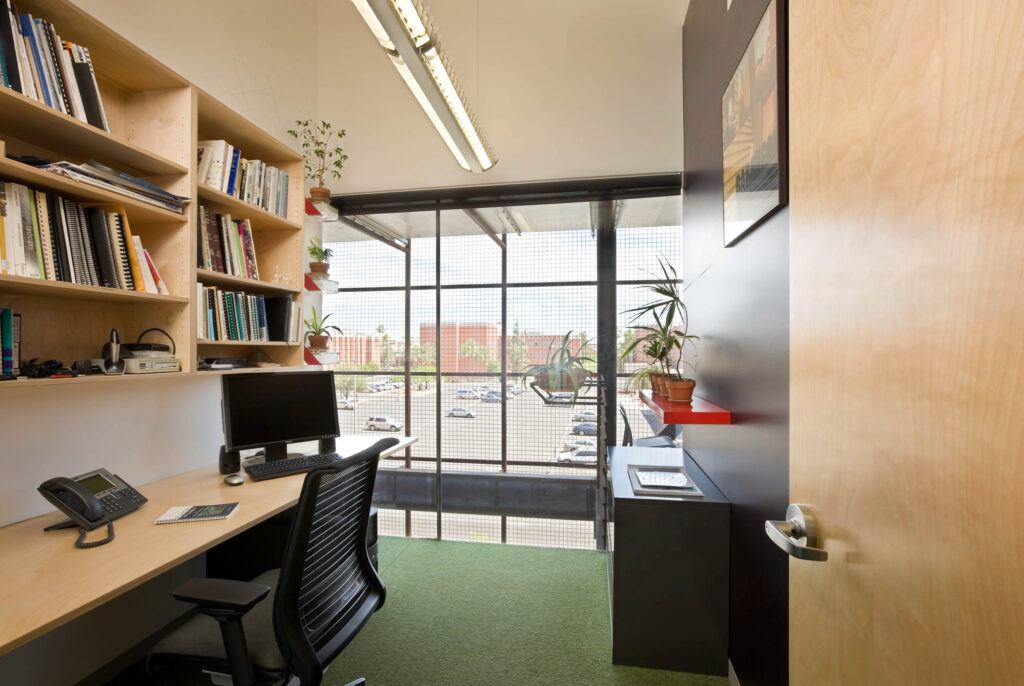
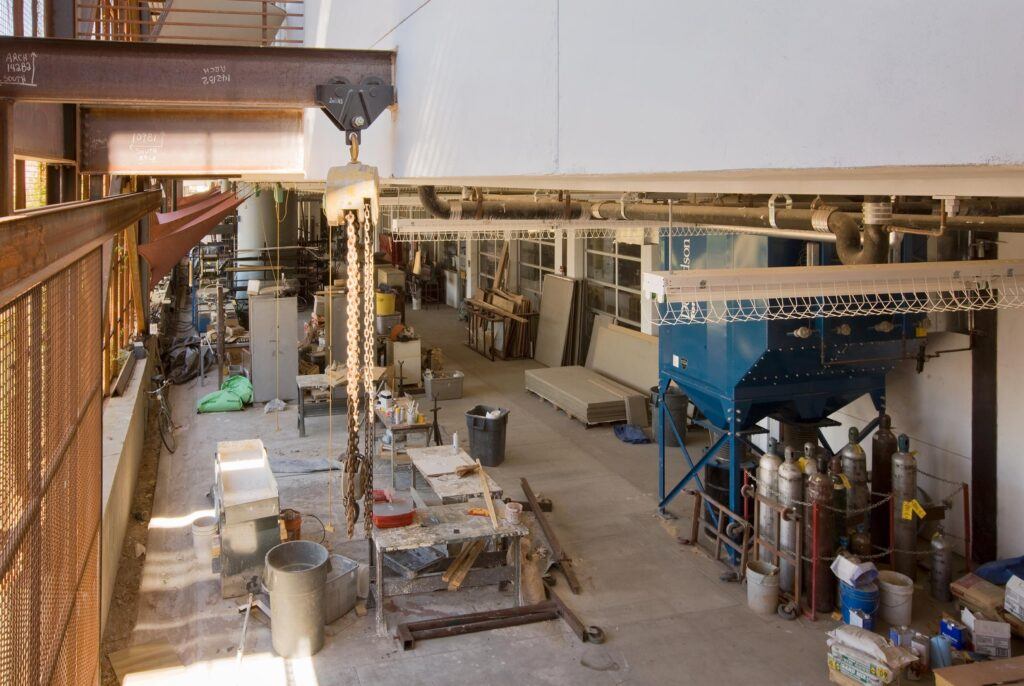
The new building is clad in clear glazing that reflects the desert sky and weathered steel that blends into the clay brick and concrete palette of the original. Its orientation parallels the adjacent, bustling Speedway Boulevard, with a curtain of clear glazing greeting the roadway to the north and smaller windows and balconies set behind a screen of growing vines facing the garden to the south. This simple passive design strategy minimizes solar exposure and maximizes diffused daylighting, while also visually connecting the design studios to the urban street edge and the Catalina Mountains beyond.
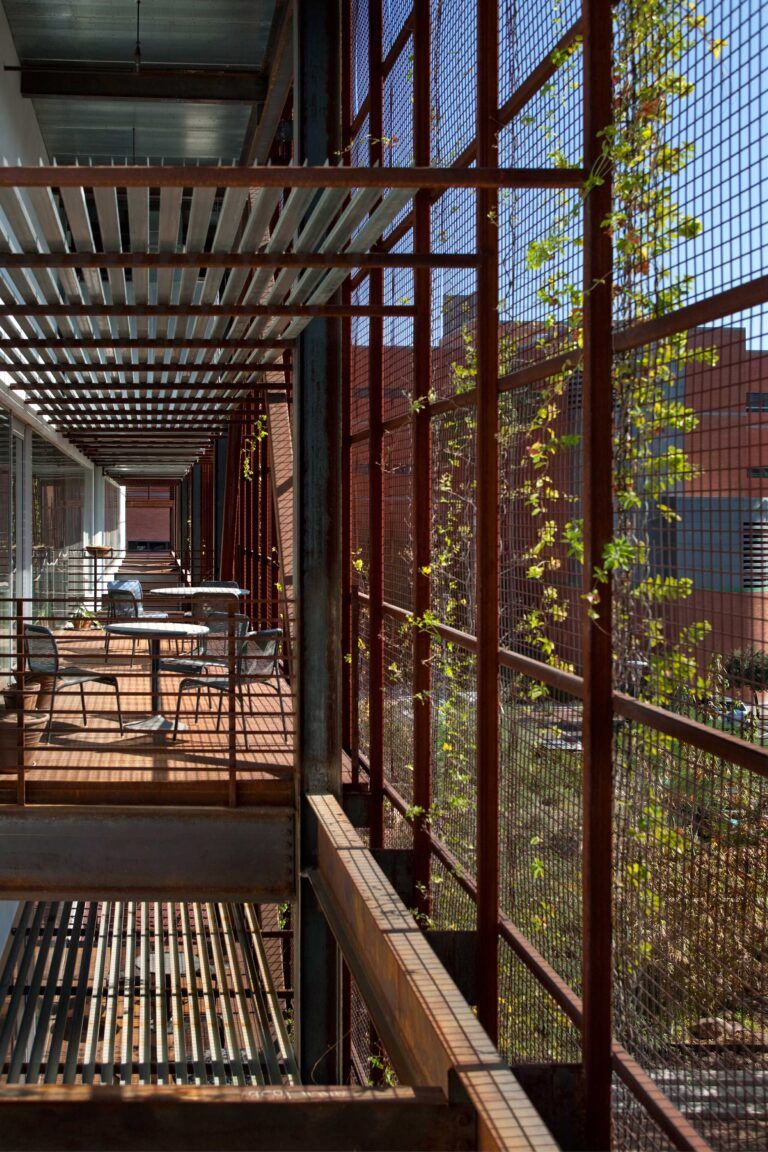

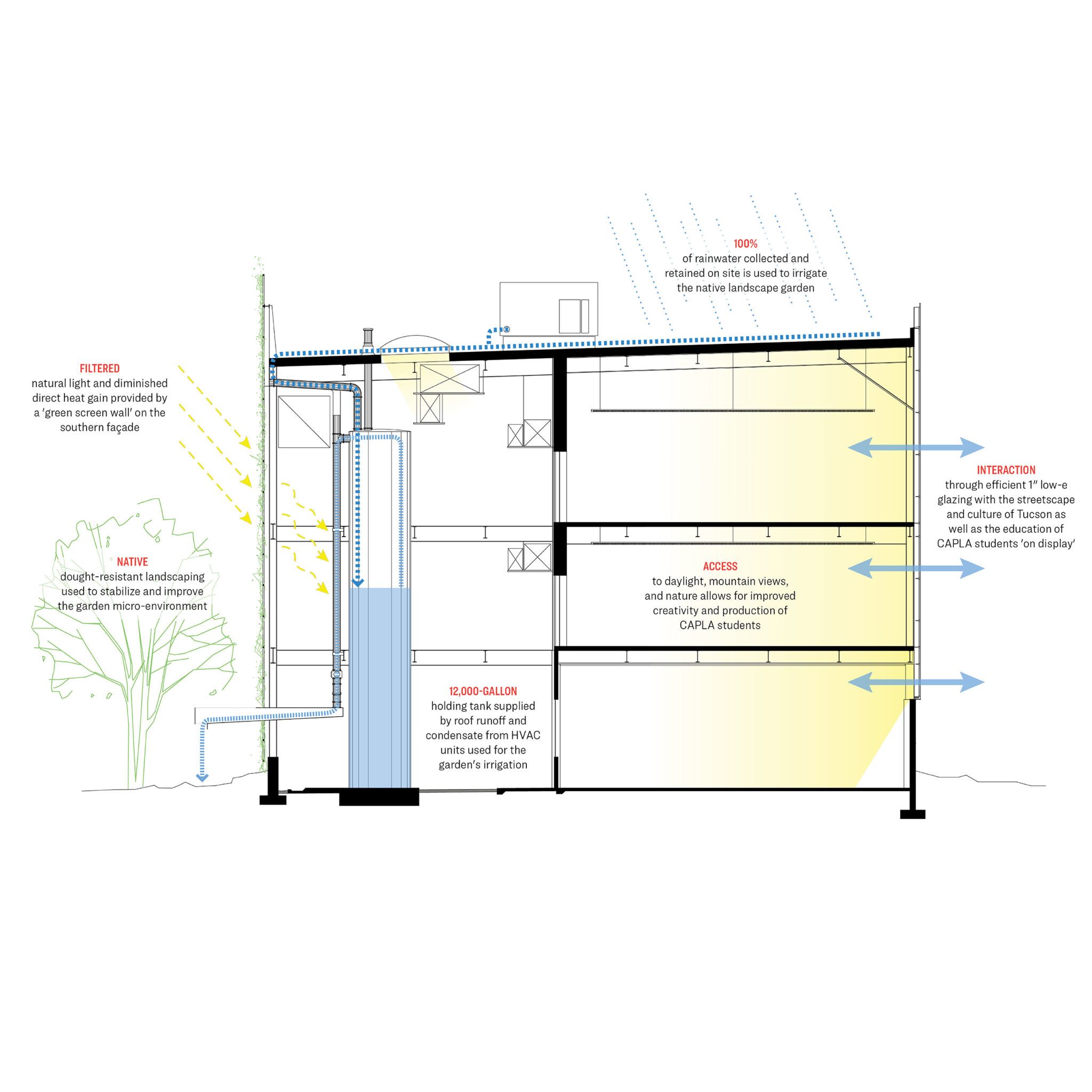
A quiet garden framing the main entry from the campus, lush with native and adaptive landscaping from Arizona’s various ecosystems, is another sustainability lesson in the education of the desert. The steel mesh screening the southern facade scaffolds the demonstration garden’s vertical growth, over time showing the natural phases of the seasons through a verdant green cloak that shades in the summer thee receded with the shifting hues of autumn. Rainwater reclaimed from the roof and condensate captured from cooling equipment is harvested into a massive storage tank and circulated through a riparian pond that flows through and waters the garden, emphasizing the preciousness of water in the desert. Like the students and faculty within, the garden and building support each other and grow together.
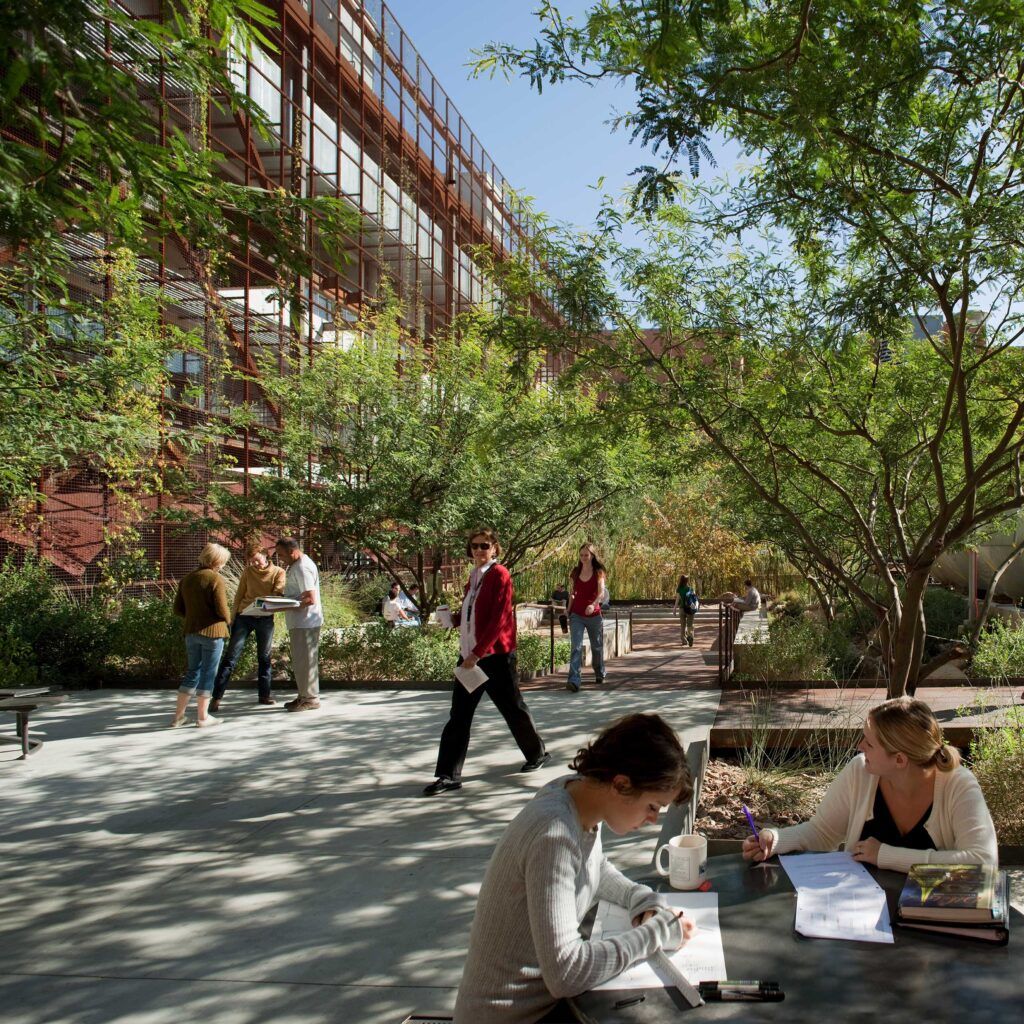
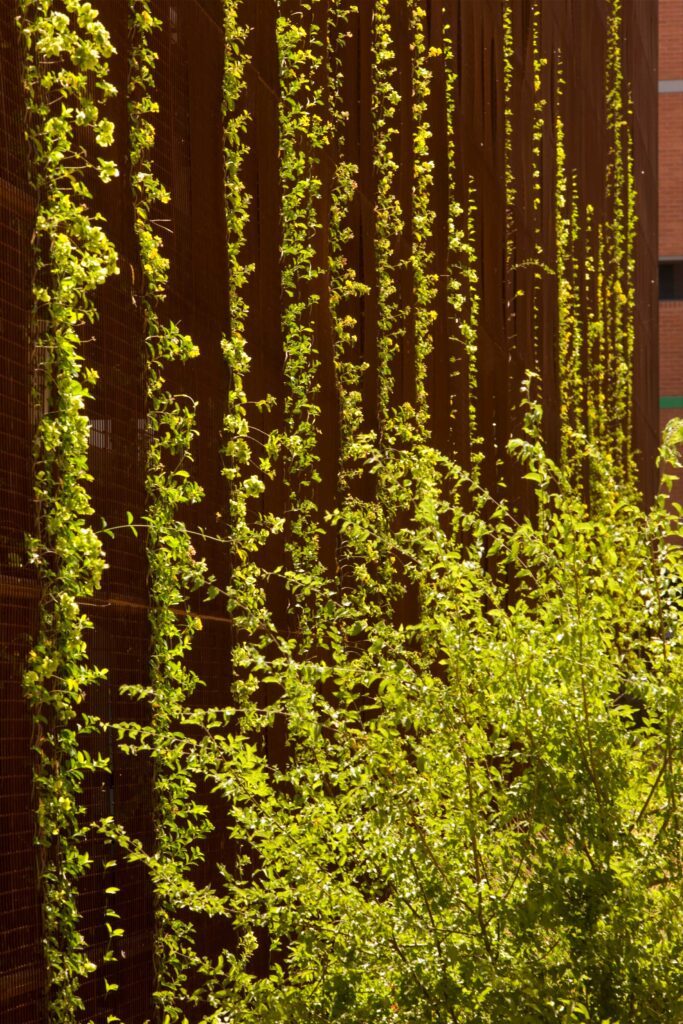
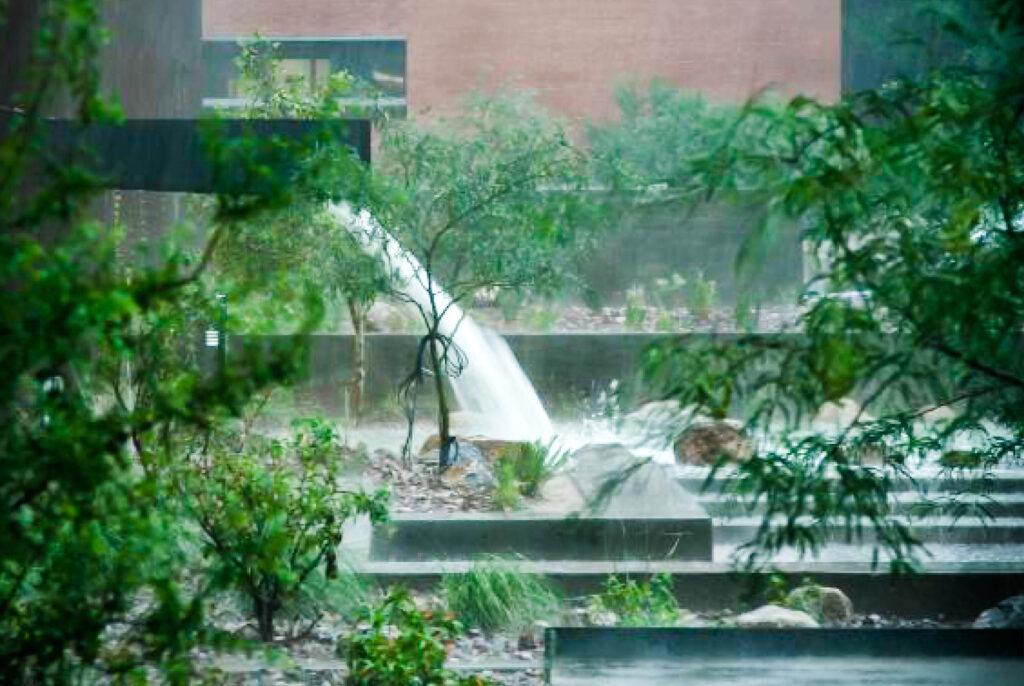
”At the gate of the garden some stand and look within, But do not care to enter. Others step inside, behold its beauty, but do not penetrate far.
Still others encircle the garden inhaling the fragrances of the flowers, and having enjoyed their full beauty, pass out again by the same gate.
But there are always some who enter and becoming intoxicated with the splendor of what they behold remain for life to tend the garden.”
Abdu’l-Baha

